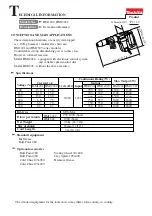
ROUTER TABLE
OPERATION & MAINTENANCE
USING THE FENCE
WARNING!
Unplug table saw and router power cords from power source.
1) Two table inserts are included with this router table (1” and 2-3/8” opening).
Install a table insert (A) Fig.13 into the router table opening, choose the one
which leaves the least amount of space around the router bit. Make sure the
choosen table insert does not interfere with the router bit rotation.
2) If you plan on making offset routing operation, install shim(s) in between the
fence and the left side outfeed board.
3) Loosen fence board fixing screws (B) Fig.13, position the fence boards (C) so
that they leave the least amount of space on both sides of the router bit. Make
sure the position of the fence boards do not interfere with the router bit rotation.
Retighten fence board fixing screws.
PERFORMING FREE-HAND ROUTING
WARNING!
Unplug table saw and router power cords from power source.
1) To perform free-hand routing, it is necessary to remove the entire fence
assembly from the router table and use the starter pin (A) Fig.14 in one of the
two holes (B or C) around the table insert.
FEED DIRECTION
Always feed the workpiece from the right side towards the left side, against the
router bit rotation. Feeding the workpiece with the router bit rotation is called “climb
cutting”.
Climb cutting is very dangerous
, because the router bit will grab the
workpiece and thrust it the same direction as the router bit rotation. See Fig.15.
MAINTENANCE
WARNING!
Unplug table saw and router power cords from power source.
Cleaning-
Clean table top with a clean dry cloth removing all excess wood chips
and saw dust. Use a resin cleaner to remove any resin build-up. After every use,
protect the unpainted cast-iron surface by wiping it clean, this will prevent wood
moisture from remaining on the table and causing rust.
FIGURE 13
FIGURE 14
FIGURE 15
Board
PARTS DIAGRAM & PARTS LISTS
Refer to the Parts section of the King Canada web site for the most updated parts diagram and parts list.


























